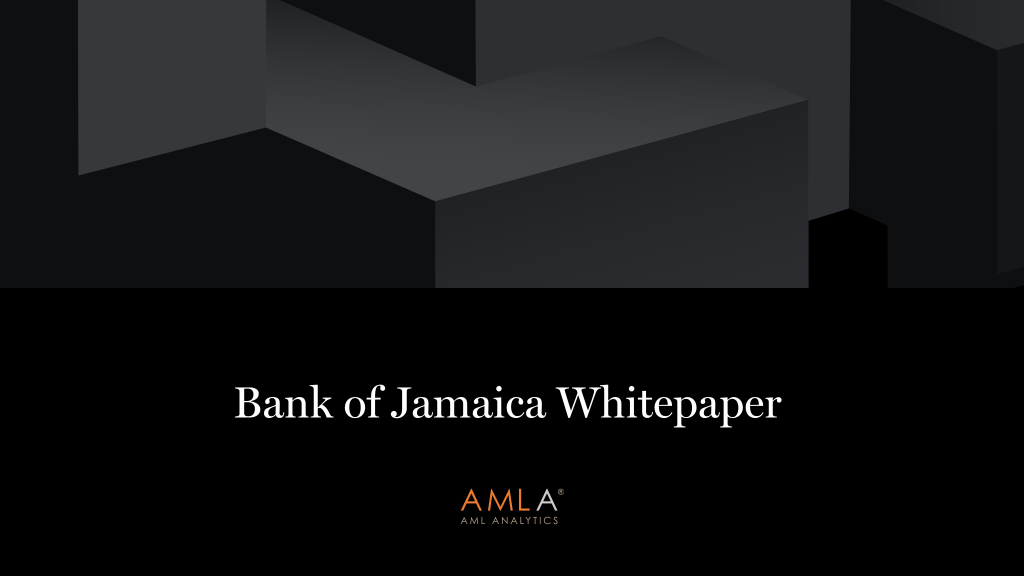Executive summary
Since the entry into force of the Banking Services Act in 2015, which introduced a significantly enhanced consolidated supervision framework in Jamaica, the Bank of Jamaica (BOJ) has continued to work to foster a supervisory culture and build the tools needed to effectively implement a risk-based supervisory approach.
Through this whitepaper, the BOJ seeks to share with its partners and stakeholders its experience in transitioning to a risk-based approach and, in particular, how the BOJ has deployed Thematic Reviews that leverage supervisory technology (SupTech) tools to enhance its efficiency and effectiveness as a supervisor.
The full build-out and implementation of a risk-based supervisory framework is a critical success factor for the BOJ in ensuring the continued positive performance and long-term sustainability of the deposit-taking institution (DTI) sector, which plays a central role in the facilitation of cross-border activities and in maintaining the correspondent banking relationships that are essential to the provision of transnational payments in the Jamaican context.
However, like many other supervisors globally, the BOJ has confronted significant challenges in implementing a risk-based approach, including the limited availability of skilled AML/CFT supervisory resources.
The Caribbean Financial Action Task Force (CFATF) fourth round mutual evaluation report (MER) of Jamaica, which was published in January 2017, was critical of Jamaica’s overall understanding of its ML/TF risks and the lack of a comprehensive national risk assessment (NRA) process to identify, assess and mitigate those risks.
The report also included a recommendation that the BOJ and other competent authorities undertake thematic AML/CFT studies by sector and types of institutions to improve their understanding of sectoral risks.
Since the MER, the BOJ has completed several Thematic Reviews to deepen its understanding of sectoral risks, including in relation to bank fraud, cross-border financial flows, and the remittances sector.
Building on the success of these reviews, the BOJ determined that a review of the internal controls of the DTIs would be an important corollary exercise from a supervisory perspective.
The BOJ appointed AML Analytics, a leading AML technology company, to conduct sanctions screening and transaction monitoring system Thematic Reviews of the DTI sector – the BOJ’s first foray into the use of SupTech tools to support its supervisory and examination activities.
The recently completed Thematic Reviews have helped the BOJ gain a better understanding of the way that specific ML/TF risks are being managed by the DTI sector and have provided new supervisory insights into the strengths
and weaknesses of each DTI’s processes and use of technology. Supervisory outcomes for the DTI sector are expected to continue to improve over time and the DTIs are already demonstrating a clearer understanding of the BOJ’s sanctions screening requirements.
Outputs from the Thematic Reviews have been directly incorporated
into the DTI risk matrix, which will assist the BOJ in identifying at-risk DTIs for enhanced supervisory scrutiny and determine the scope of future on-site examinations.
Deploying SupTech tools in these Thematic Reviews has shown considerable promise in scaling and automating routine elements of the BOJ’s supervisory work, thereby helping the BOJ to focus resources on tasks that require greater supervisory judgement and experience. It has also been validated for the BOJ that SupTech tools can permit elements of supervisory examinations to be effectively carried out off-site, which has been instrumental in allowing the BOJ to maintain supervisory intensity during the COVID pandemic when on-site examinations were not possible.
Although increasing digitisation in the financial sector that allows for the end-to-end digital delivery of financial services carries with it new risks from an ML/TF perspective, it also provides opportunities for supervisors to leverage powerful and innovative SupTech tools to support their risk-based supervisory efforts.
The BOJ is pursuing a number of workstreams that will further integrate SupTech solutions into its risk-based supervisory approach, including increasing integration of big data analytics, and to share its experiences and lessons learned in this regard with competent authorities and other stakeholders in Jamaica as well as its CFATF partners.

